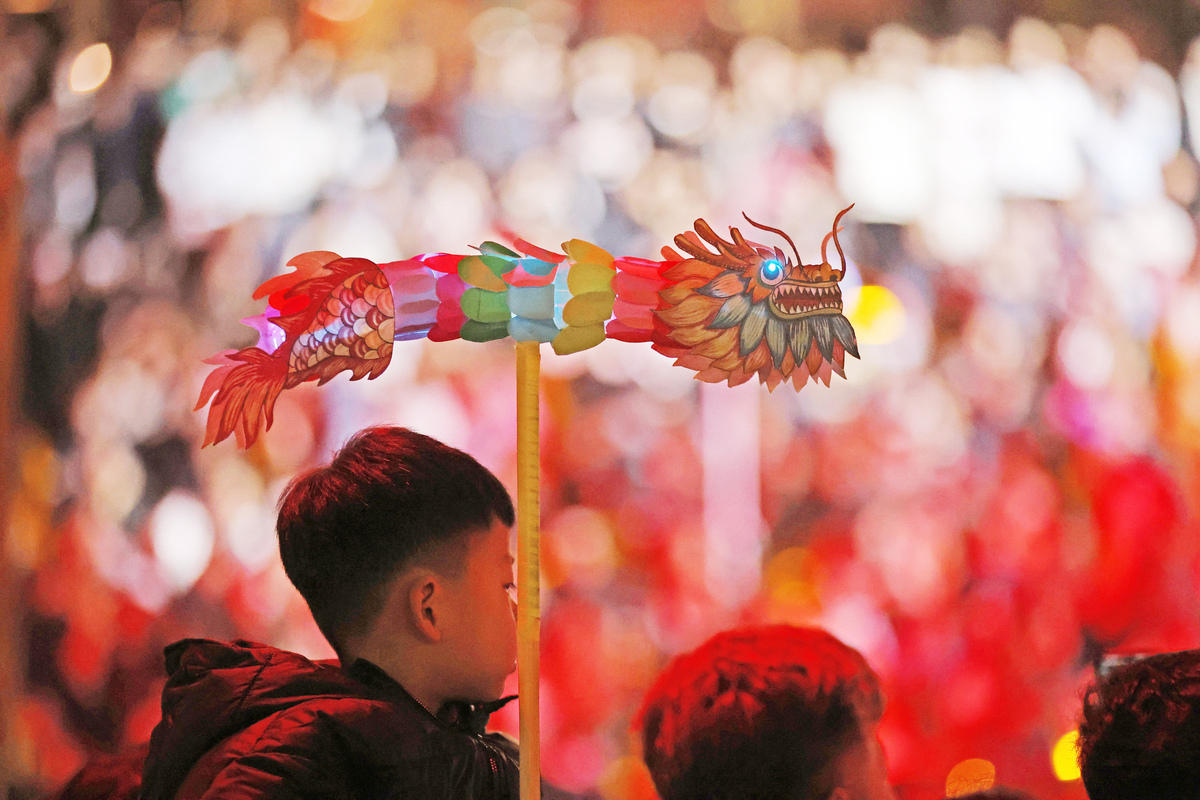龙年到 聊聊龙年成语 (II) Idioms for the Year of the Dragon (II)
The World of Chinese 2024-03-05 15:28


Kick off the Year of the Dragon (龙年, lóng nián) with some useful Chinese "chengyu (成语, chéng yǔ)" about this mythical creature
The Year of the Dragon has always been one of China's favorite years. As one of the country's most beloved zodiac animals (十二生肖, shí èr shēng xiào), dragons have been seen as symbols of the nation since ancient times. Chinese people often even refer to themselves as "descendants of dragons (龙的传人, lóng de chuán rén)."
In traditional Chinese culture, dragons are powerful divine beasts (神兽, shén shòu), symbolizing authority, nobility, and good fortune. Many believe being born in the year of the dragon will bring them good luck. The belief is pervasive: China often experiences higher birth rates (出生率, chū shēng lǜ) in dragon years.
Over centuries, dragon (龙 lóng) stories have formed dozens of chengyu, Chinese idioms normally consisting of four characters (四字成语, sì zì chéng yǔ). Most of these idioms including dragons are positive (正面的, zhèng miàn de), often describing a person's outstanding appearance, status, or abilities.
For example, a talented or powerful individual is often referred to as a "dragon among humans (人中之龙, rén zhōng zhī lóng)." The leader of an excellent team may be hailed as the "head of a group of dragons (群龙之首, qún lóng zhī shǒu)," and parents' great ambitions for their children are encapsulated in the term "expect the child to become a dragon (望子成龙, wàng zǐ chéng lóng)." Here are a few more dragon idioms and their fascinating stories.
画龙点睛 Dotting the eyes after painting a dragon
This idiom originates from the story of Zhang Sengyao (张僧繇, zhāng sēng yáo), a renowned painter during the Southern and Northern dynasties period (420 – 589). According to History of Famous Paintings Across Dynasties (《历代名画记》lì dài míng huà jì), the first comprehensive history of Chinese painting, Zhang painted four golden dragons in Anle Temple in Jinling (today's Nanjing). But Zhang left their eyes unpainted, claiming that giving them eyes would make the creatures fly away.
People were skeptical about Zhang's statement so he drew in the eyes of two dragons. The beasts immediately broke free from the wall amid thunder and lightning, soaring into the sky, while the other two dragons, still eyeless, remained in place on the mural.
The tale came to symbolize the significance of a final crucial step in any literature or art creation. The idiom is now widely used to describe the practice of using a few sentences to clarify key points in writing or speeches, thereby enhancing the content's clarity and impact.
The last few sentences of the article really breathed life into the dragon by dotting its eyes.
Zhè piān wén zhāng de zuì hòu jǐ jù zhēn shì huà lóng diǎn jīng zhī bǐ.
这篇文章的最后几句真是画龙点睛之笔。
来源:The World of Chinese
编辑:万月英

















 英语点津微信
英语点津微信 双语小程序
双语小程序